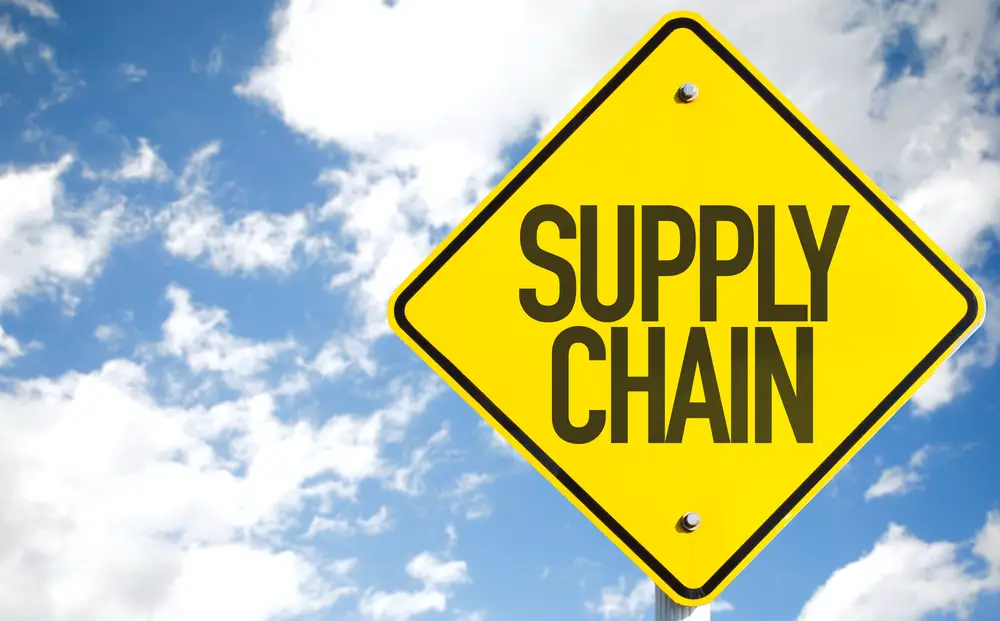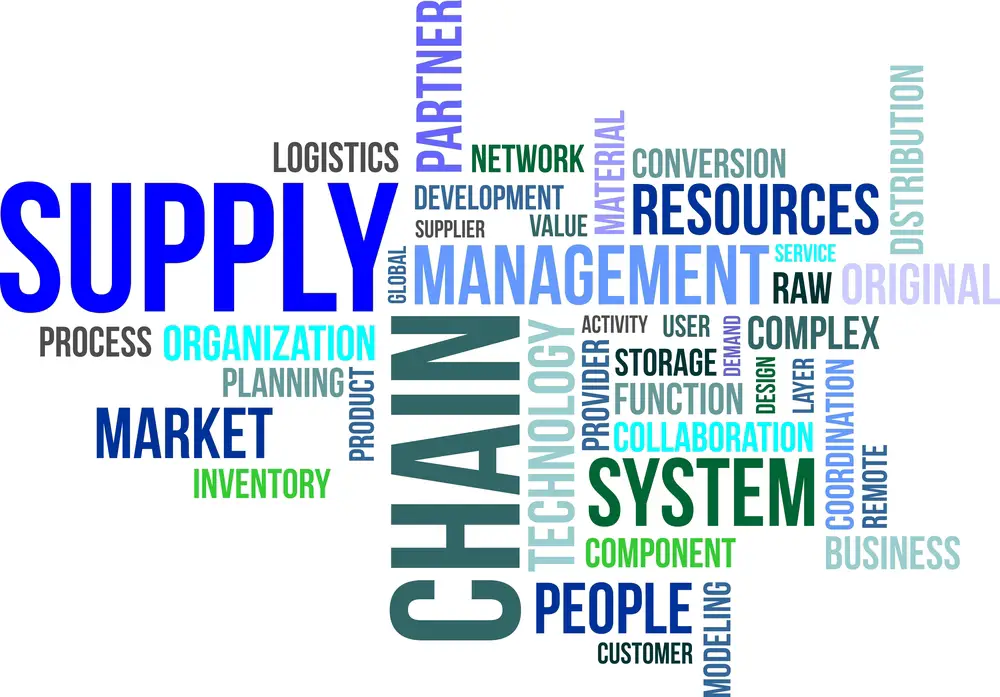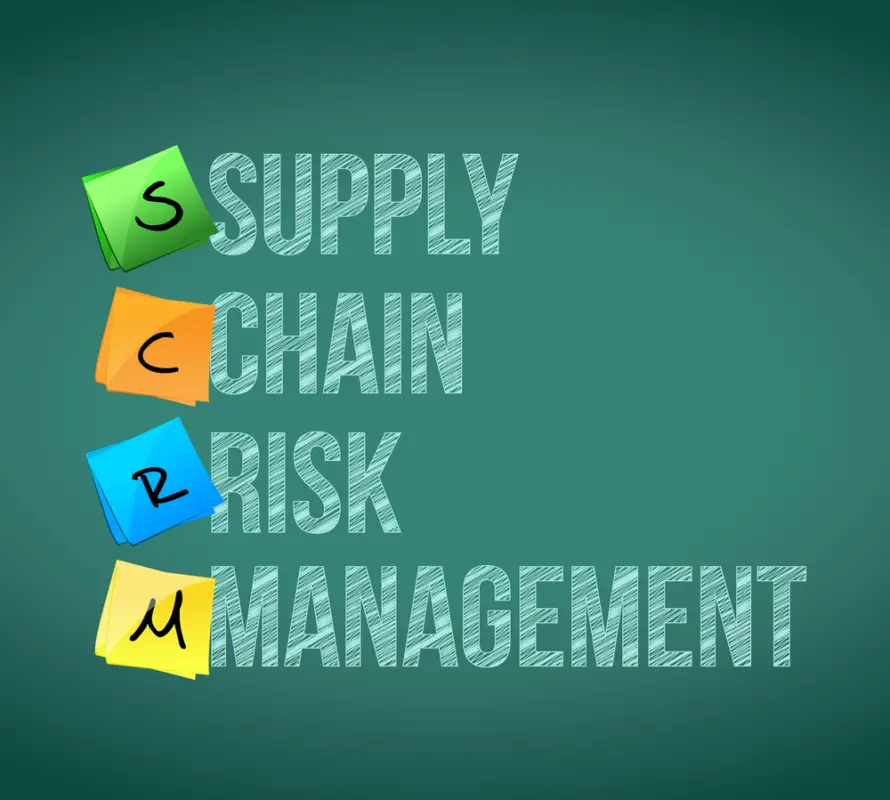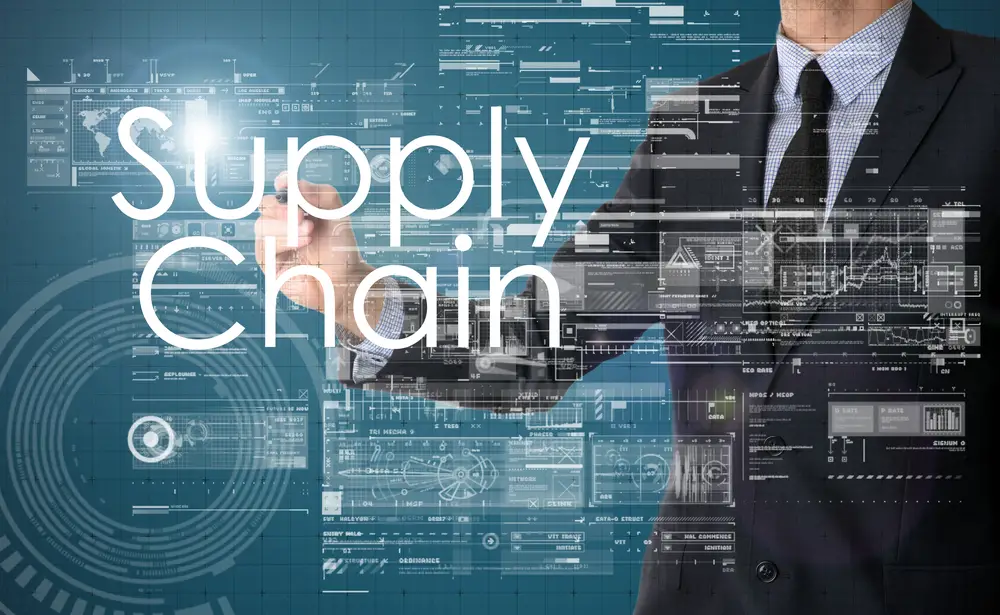Risk management in supply chains can have a major impact on overall performance. With proper risk management in place, companies can reduce potential disruptions, such as delays and supply chain breakdowns, improving efficiency and cost savings.
Additionally, risk management systems enable companies to identify vulnerabilities and risks quickly and take corrective action before any damage is done, allowing for proactive choices. It can also help ensure regulatory compliance and develop long-term relationships with suppliers by promoting trust and transparency.
Companies can improve their overall performance by having a comprehensive risk management plan covering all supply chain aspects.
Risk management in supply chains has become a major focus for many companies due to the global economy’s increased uncertainty. Let’s take a look at what risk management is and how it affects supply chain performance.

What is Risk Management?
Risk management is the process of identifying, assessing, and controlling potential risks that could disrupt the operations of a business or organization. This includes risks associated with natural disasters, political instability, economic downturns, and health crises.
As part of this process, businesses must identify areas of their supply chains that are at risk of disruption and develop strategies to mitigate those risks.
Why is Risk Management Important?
Having a good understanding of risk management helps companies anticipate potential issues and develop strategies to address them before they become larger problems. Proactive risk management ensures companies can avoid costly mistakes and disruptions that could severely hamper their operations.
Additionally, by taking steps to mitigate risks, companies can improve customer service levels by minimizing delays caused by unexpected issues along the supply chain.
Finally, having good risk management practices in place will also help protect against legal implications due to negligence or improper handling of materials along the supply chain.
Risk Assessment & Mitigation Strategies
When assessing risk within a supply chain, it is important to identify all possible areas where disruption could occur. This includes supplier reliability, transportation methods, inventory levels, and information systems security.
Once these areas have been identified, it is important to develop strategies for mitigating those risks, such as diversifying suppliers or investing in more efficient technology solutions.
Additionally, companies should look into insurance options such as cargo liability insurance or product liability insurance which can provide financial protection if something goes wrong during the transport process or with products purchased from suppliers.
What is Supplier Risk Management?
Supply chain risk management (SCRM) is a method for evaluating risks associated with supply chain operations. Implementing a Global Supply Chain Risk Management Strategy can improve the efficiency of operations, reducing the need for expensive products.
Supplier Risk Management is one of many areas used by manufacturers, retailers, financial institutions, and Governments. It largely focuses on monitoring suppliers’ value to the business and assessing their risks.
The end result is a robust supplier risk matrix describing possible risk factors, determining their impact, and determining plans for addressing and minimizing any potential supplier risk. Supplier risk management is a major area of supplier management. In contrast, risk management often confuses supplier relationship management.
Supply Chain Management defines how organizations handle goods flow, including processes for transforming raw materials – a process in which raw materials are consumed – for products.
These include the plan management of resources sourcing, equipment procurement, transformation & logistical aspects. Companies have implemented a supply chain management approach to increase their competitive edge. However, globalization in supply chains can raise the risk of loss of quality and reputation.

Overview of supply chain risk management scrm
Supply Chains must master changing markets to deliver products to customers in time with minimal cost and should also shorten the cycle time and improve quality. The ability to manage the supply chains globally is considered to have significant economic benefits.
The supply chain of products and services (SC) can be understood as an integrated group of businesses whose material flow, information, or money are connected to each other. Supply chains have undergone thorough investigation due to their complexity which requires periodic analysis in the context of global environments.
Improve operational flexibility with analytics automations and redesigned delivery models. The supply chains are the gas that drives the motors for manufacturing and retailing. Without it, there will be nothing to buy, stock to buy, and there will not even be income.
Unfortunately, disruption in this process is inevitable as retailers and manufacturers must work together to find their way back into their business. In the recent Gartner survey, less than half of those surveyed reported a resilient network.
Importance of Supply Chain Risk Management
In an increasingly interconnected global economy, the importance of proper supply chain risk management cannot be overstated. To succeed in today’s business climate, companies must have rigorous processes and systems that anticipate unforeseen events and optimize operations even under crisis situations.
Having sound supply chain risk management practices, business managers can quickly identify which areas need extra attention and take proactive measures to reduce potential risks with objectives such as improving delivery times, lowering costs, or increasing reliability. Neglecting these capabilities can translate into lost customers and market share.
Supply chain risk management SCRM involves developing a strategy and working on identifying, measuring, and reducing a supply chain’s risk. It will help you build and strengthen supplier relationships to avoid bottlenecks and help your firm maintain a legal and ethical operation.
Supply chain risk management involves a strong understanding of supply chain management and a thorough audit process.
– Reduced inventory costs
– Increased efficiency and productivity
– Reduced transportation costs
– Reduced waste and spoilage
– Improved customer service
How Does Risk Management Affect Supply Chain Performance?
The goal of risk management in supply chains is to reduce the impact of disruptions on operations by predicting and preparing for them in advance. This helps companies minimize losses due to unexpected events such as natural disasters or economic downturns.
It also improves efficiency by reducing the amount of time needed to respond to unexpected circumstances. Additionally, a comprehensive risk management plan can help businesses save money by avoiding costly delays or mistakes that can occur when issues are not anticipated or addressed proactively.
Supply Chain Risk Examples
Purchasing risks involve various problems that occur between vendors and suppliers. Several of these disrupt production, operations, sales, and project activities. These issues could lead to reputation and quality issues and reputational conflicts.
Among the supply risk associated with this supply is:
Shortages
One of the most pressing examples of supply disruption companies face today is shortages. This can happen due to increased demand, unexpected production breakdowns, or seasonal availability shifts.
Companies must have plans to deal with these events, which can include sourcing from alternative suppliers or making regular assessments of the inventory levels of key items. Such strategies are vital if businesses are to mitigate the impact of supply chain disruptions caused by shortages and help ensure ongoing success.
They may occur because of the lack of components materials or components necessary for producing the final product. Shortages are either temporary shortages or long-run lapses in supply when suppliers discontinue necessary goods.This can be caused by internal supply chain risks.
Price increases
Unexpected price increases for certain goods and services, organizations must find ways to adjust without disrupting their bottom line. By developing processes to assess price volatility and regularly monitoring supply sources, companies can better anticipate changes in prices or availability of materials.
This could significantly impact production timelines and introduce additional cost burdens. Companies must also be aware of industries-wide price increases as these can also result in supply chain disruptions. Ultimately, having a comprehensive plan and flexibility are essential components for maintaining a healthy supply chain, even amidst drastic changes in pricing.
Prices can rise due to price changes and inflation due to currency volatility and custom tariff changes. Volatility in prices caused by external supply chain risks can threaten business projections.

Supplier relations
Building and maintaining effective supplier relations is crucial for any organization that wants to mitigate the risk of supply chain disruption. Companies must develop strong, reliable relationships with their suppliers to ensure business continuity and a smooth flow of goods and services.
To establish successful partnerships, organizations should engage in frequent communication among multiple levels of stakeholders, assess operational capabilities, strategize plans for solving potential issues, create formal agreements between both parties, and analyze risk management techniques annually.
With the right strategic framework, companies can build an efficient supply chain where all parties benefit from the mutual trust built over time and competitive advantage.
Depending on what is going on in the legal process and the supplier you’re dealing with, you will have to replace them.
Supply shocks
Supply shocks remain one of the biggest sources of supply chain risk. This can range from natural disasters like floods and fires to political unrest and government decisions. In any case, such events disrupt the normal flow of materials, components, or products through an integrated network.
As a result, companies must take steps to protect their supply chain operations against these sudden changes. The right strategies can help to reduce the impact and severity of a supply shock to safeguard business continuity.
Therefore it is important that planners and supply chain managers understand the potentially devastating effects of a supply shock to be prepared for when they occur.
While these sudden changes cannot always be prevented entirely, with proper awareness and preparation, businesses can mitigate their impact and stay resilient amid even the most difficult situations.
Sudden global or industry-wide declines due to the impact of disasters, pandemics or labor disputes, war, or embargos.
Quality failures
Quality failures are a major risk throughout the entire supply chain. Poorly manufactured products and defective components delivered at the final stage of production can lead to significant revenue losses and damage to brand reputation and customer loyalty.
Companies must take steps to ensure quality across their entire supply chain, or they risk producing substandard products that customers will reject. Quality assurance is a complex process but can be simplified by introducing industry-standard protocols for testing and auditing suppliers and vendors.
Monitoring materials handling processes and testing finished products before releasing them onto the market. When done properly, this comprehensive approach can protect companies from costly quality-related risks in their supply chains.Quality failure happens when shipments of parts fail to meet specifications.
Steps in the Supply Chain Risk Management Processes
Start by weighing operating costs under standard settings vs. costs under severe constraints. Depending on your framework, an SCRM framework could have a similar appearance.
Identify your risks
As new technologies become available and global markets expand, it is increasingly important for businesses to take a deeper look into their supply chain risk management process. Identifying risks is the first step toward proper management and understanding these tools. This can be done through careful evaluation of data related to order accuracy, customer demand levels, and on-time delivery rates.
Additionally, evaluating operations in areas such as inventory management, supplier quality control, and transportation costs is necessary to gain a more comprehensive understanding of supply chain risk impacts.
The goal of this research should be to review the current system and modernize processes that may need improvement or replacement with updated industry solutions.
These and many more are unimaginable and unreported and can result in delays, additional expenses, lower sales, and customer service. Learning from past events is advisable, and observing current events and planning for the future.
The most difficult aspect of estimating future risk is despite the lessons learned from previous incidents. Looking into the future is hard to achieve.
Compile Risk Scores
Risk scores are now used to measure potential issues, and problems found during step processes within the supply chain risk management process, making it possible to identify sources that could impede operations within the supply chain.
Compiling these potentially hazardous risks into numeric scores helps companies quickly identify areas prone to disruption and take preventative measures before any potential losses arise.
Future-oriented organizations are always looking for cutting-edge ways to assess risks throughout the entire supply chain and compile accurate risk scores that reflect their current needs.
This means knowing your risks is critical. Risk assessment is an excellent tool that gives instant insight into what problems require more time or attention.
This risk score can represent a number or color of information on how a risk relates to another in a supply chain and allows a prioritizer at any given time to prioritize the risk.
Define your mitigation strategies and response plans
As part of this process, it is essential to establish mitigation strategies and response plans for each step in the supply chain risk management process. Steps may include assessing supplier performance, anticipating market changes, evaluating regulations and external factors, and reviewing supplier contracts.
Evaluating transportation choices, implementing inventory planning protocols, testing assumptions around demand variations, conducting stress tests on data analytics models, tracking threats in real-time utilizing AI and automation technologies, benchmarking competition regularly, and tracking customer satisfaction rates.
Having clear mitigation strategies and response plans in place allows organizations to be better prepared when disruptions or risks arise by having sufficient resources to anticipate them quickly and accurately.
Many companies lack a comprehensive contingency plan as it does not devote enough time to developing a contingency plan for every risk. If the idea is to discuss all possibilities and list everything that could be possible.
It is the best way to make it a reality for everyone. It allows business managers the chance to pivot if a crisis arises rapidly. However, evaluating your choices early can put you in better shape should the event become imminent.
Develop an SCRM plan
Developing an SCRM plan is essential to effective supply chain risk management. It helps companies define their supply chain processes and objectives, identify potential risks they may face, and develop mitigation strategies to reduce their exposure.
Moreover, a robust SCRM plan can help create the right organizational culture and enable the right teams and people to contribute to ensuring a safe, secure, and resilient supply chain. To develop an effective SCRM plan, it is important to focus on three key areas.
First is assessing current processes, understanding which activities may present significant risks to the company, and developing plans for mitigating those risks. Second is implementing policies and procedures designed to prevent or control any identified supply disruption or failure threat.
The third is monitoring key performance indicators such as cost-effectiveness, timelines for delivery of goods, quality controls, etc., that measure success in preventing risk events from occurring. An effective SCRM plan can be invaluable in protecting companies from unforeseen risks that could seriously disrupt operations.
Your plan needs to be comprehensive, considering everything you’ve gathered during this period of time. All businesses have a risk management plan for their own unique risks, but if it is implemented, there should be five essential rules.
Crisis Management
The importance of learning from disruptions and developing a more effective procurement crisis planning system.
Developing your own plan and leading from the top
Strong leadership during crisis situations is of immense importance. This applies even when it comes to procurement. Our 2017 report states that one key capability in sourcing is to make fast decision-making using clearly defined facts.
Let’s say a pandemic in 2020 was realized when businesses could make quick decisions and more effectively navigate changing markets. Leadership is required to create and implement effective plans for business goals and a clear outline of priorities to help procurement teams react quickly and effectively.
Short term
The first step in responding to emergencies should be to set expectations. This is where purchasing managers need clear control and unite the team with common guidelines. Implementing these rules helps you to stop unnecessary spending on products and services providers as they become more regulated.
These rules differ depending on a corporation’s situation. We met with small teams in response to COVID19 by altering the approval procedure in which any new purchase requests must be approved immediately.
Medium term
In response to plan development, building more agile approaches is important. This also applies to agile decisioning when responding to the unfolding crisis and tools for emergence on the other.
If you know what damages you are causing to the environment and how to mitigate them, you know a little about the time the situation will last. When developing your future plans, it’d also make sense to adopt an agile methodology to quickly implement new methods to bring back your routine to normal.
Long term
Long-term strategies for crisis management usually come in when the conditions stabilize and the way forward is clear. So you must now prepare for the possible disruptions. The key aspect is eliminating data silos and increasing transparency within your organization.
Only by using the most accurate and updated information can you make rapid, accurate decisions when an interruption occurs. It is in the hands of the managers to foster a culture of transparency and create processes to support data exchanges.
Adapting to your industry
There are no single solutions for crisis management. It would also reduce confusion during the worst possible catastrophes. Instead of focusing on specific aspects, your company can focus on your vertical.
Covid-19 prompted a different response from the healthcare and pharmaceutical sectors, from manufacturing to transport. Throughout your plan for a possible situation, be mindful of all available options and open your choice to the specific circumstances of the situation.
Steps to Manage Supply Chain Risks
Although the problem is quite a bit complex, the framework is a simple framework that will help you manage supply chain risks.
Identify the problem
Identifying the risks associated with supply chains is an essential step in managing those risks. Various techniques can be used to scan the supply chain and identify areas of concern – from assessing industry trends, monitoring supplier performance, mapping out different stages of the supply chain process, and strategizing collaboration between key stakeholders.
It is also important to pay attention to any possible threats that may arise from external or political elements. With a detailed assessment, businesses can map out potential problems before becoming actual ones and develop effective strategies to contain or eliminate them. Knowing how to identify the most significant risks will lay the foundation for successful risk management of a supply chain.
Identifying risks for suppliers in the supply chain is an initial process. You must account for all levels 1 and 2, but ideally, you’ll be beyond levels 2 and 3 because these are where most disruption occurs.
Using risk scoring software is important to get the most out of the information you have on each element of the risks using measurable standards that are important to you. Once the risk assessment is decided, the solution is ready for monitoring the supply chain for continuous monitoring. At that stage, active surveillance is essential.
Assessed
Assessing risks involves looking at the company’s operational processes, suppliers’ relationships, and the potential externalities they could cause in the future. Additionally, organizations should consider threats to their data security, such as cyber threats or instances where data is unintentionally misused.
Taking action to address identified risks involves going through every step of the supply chain process, from procurement to delivery and beyond. This requires setting up internal guidelines for compliance with regulations, implementing quality assurance measures, ensuring equitable pricing from suppliers, monitoring vendor performance against established KPIs, and more.
Managing risk efficiently is critical to controlling costs and mitigating disruption within an organization’s supply chain.
So, you can get some risk information, but this information is not yet useful. At this stage, you must examine the data as accurately as possible to determine if there are any risk factors. Ideally, you must target your mitigation activities to the most important impact.
It must be done to understand your business needs. Let me give some examples. In this case, it’s important to develop Risk Assessment matrices.
Mitigating risk factors
Supply chain disruptions are beyond the control of any individual business. Taking steps to mitigate supply chain risks is critical for companies to remain competitive and profitable. Businesses must also engage their suppliers to identify and address vulnerabilities, aligning their goals and strategies to ensure consistent quality service along the entire supply chain.
Additionally, purchasing insurance coverage may provide additional peace of mind, giving companies the financial capability to address unforeseen obstacles that threaten their operations’ success.
Mitigating supply chain risks is not only necessary – but beneficial – it provides businesses with the resources they need to navigate disruptive situations in a time-sensitive manner while protecting their bottom line.
The process of understanding and estimating risk is good, but if there’s little risk, there’s no chance of disruption. An effective risk reduction plan has two parts: First, risk identification and evaluation should be accompanied.
Once you are comfortable displaying this information, you can take action to prevent this from occurring to you. It could even mean the absence of sole-source events, broadening supplier portfolios by geographic location, and encouraging and implementing the process.
Conclusion
Risk management in supply chains is essential for businesses looking to remain competitive in an uncertain environment. By understanding how risk management affects supply chain performance, businesses can better prepare for potential disruptions and ensure their operations run smoothly and efficiently.
Investing time and resources into creating a comprehensive risk management plan can go a long way toward protecting your business from unexpected events. With careful planning and preparation, you can be confident that your company is ready for whatever life throws its way.
Good risk management is essential for maintaining an efficient and successful supply chain operation. By properly assessing risks and implementing mitigation strategies before any disruption occurs, companies will be better prepared for anything that might come their way while ensuring proper customer service levels.
This will remain intact throughout the entire process. For those looking to improve their understanding of risk management in supply chains and its impact on overall performance – this article has provided you with a solid foundation.
Have you read?
Vendor risk management best practices
Why is vendor risk management important
Guide to quality risk management
`How to mitigate vendor risks and supplier performance

Chris Ekai is a Risk Management expert with over 10 years of experience in the field. He has a Master’s(MSc) degree in Risk Management from University of Portsmouth and is a CPA and Finance professional. He currently works as a Content Manager at Risk Publishing, writing about Enterprise Risk Management, Business Continuity Management and Project Management.

